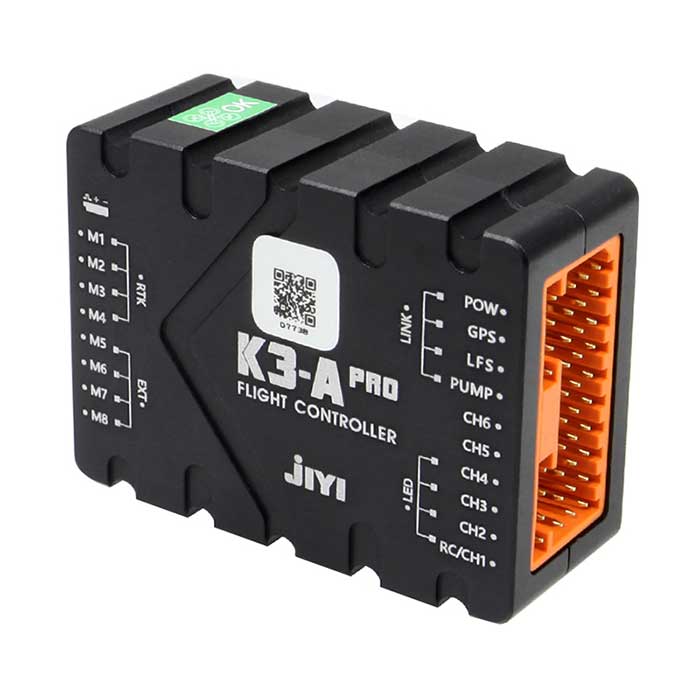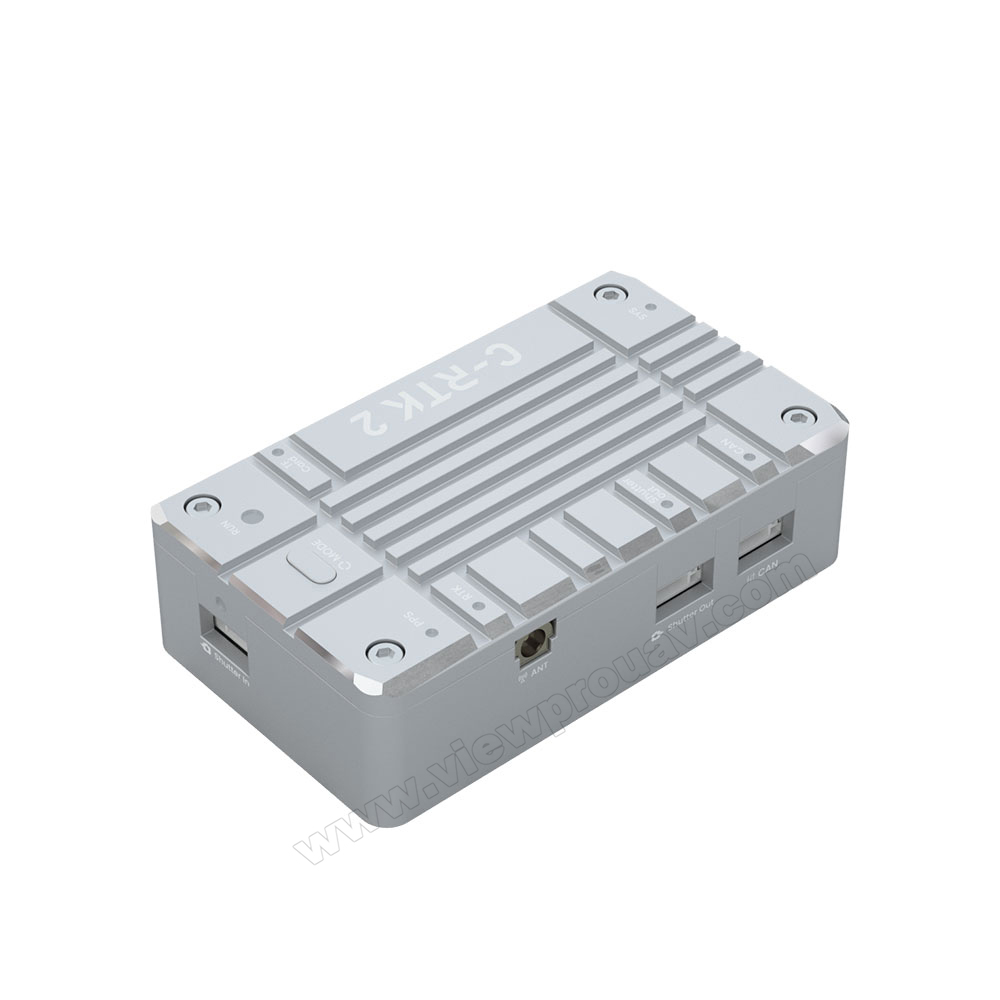Why Choose SparkNavi Drone Flight Controller and GNSS/INS Made in Taiwan for Advanced Navigation
Why Choose SparkNavi Drone Flight Controller and GNSS/INS Made in Taiwan for Advanced Navigation
Blog Article
The Value of Drone Flight Controllers in Modern Aerial Modern Technology: Secret Components and Their Effect
In the world of modern-day aerial modern technology, drone trip controllers offer as the essential systems that orchestrate a drone's performance and capacities. As sectors significantly count on drones for applications ranging from farming to security, the evolving innovation within flight controllers elevates essential inquiries about their future effect and potential advancements.

Overview of Drone Trip Controllers
In the world of airborne modern technology, drone trip controllers function as the essential brain of unmanned airborne cars (UAVs), making it possible for exact ability to move and security during trip. These innovative systems incorporate sensor data, processing algorithms, and control inputs, enabling drones to carry out complicated flight patterns with precision.
Drone flight controllers use various sensors, such as gyroscopes, accelerometers, and GPS components, to analyze the UAV's alignment and placement in real-time. This information is necessary for keeping balance and making sure secure operation in varied ecological problems. The controllers procedure this data to make rapid changes to the drone's electric motors, permitting smooth shifts and responsive handling.
In addition, trip controllers are furnished with advanced software that supports attributes such as waypoint navigation, obstacle evasion, and self-governing trip capabilities. This software is vital for both commercial and recreational applications, where reliability and precision are critical. As drone modern technology continues to breakthrough, the evolution of flight controllers will certainly play a critical role in enhancing UAV versatility, security, and functionality, ultimately increasing their applications throughout different markets.
Key Components Explained
Comprehending the basic components of drone flight controllers is essential for comprehending exactly how these systems operate properly. At the heart of a trip controller is the microcontroller, which works as the brain, refining data from various sensing units and carrying out commands. Vital sensors include gyroscopes and accelerometers, which determine the drone's alignment and movement, giving crucial comments for stablizing.
One more secret part is the measure, which gauges altitude by gauging atmospheric pressure, while GPS components use positional information, making it possible for self-governing navigation - SparkNavi drone flight controller and GNSS/INS made in taiwan. The trip controller likewise interfaces with Digital Speed Controllers (ESCs), which control the speed of the drone's electric motors based upon the controller's commands
Interaction components, such as radio receivers, assist in remote input, enabling operators to send commands in real-time. In addition, some trip controllers incorporate software program that can handle complicated formulas for waypoint navigation, flight planning, and telemetry data analysis.
Role in Flight Security
Central to maintaining flight security, drone flight controllers utilize advanced formulas to refine sensing unit data and make real-time adjustments. These controllers are geared up with an array of sensors, consisting of accelerometers, barometers, and gyroscopes, which continually check the drone's alignment, rate, and elevation. By translating this information, the trip controller can recognize variances from the wanted flight course and react without delay to preserve security.
For example, if a drone experiences an unexpected gust of wind, the flight controller can swiftly adjust the motor speeds to combat the disturbance, ensuring a steady trip trajectory. This ability is critical not only for manual flight procedures however additionally for performing intricate maneuvers and preserving smooth flight in different environmental conditions.
.png)
Furthermore, the advanced algorithms used in trip controllers, such as PID (Proportional-Integral-Derivative) control, allow for fine-tuning of the drone's response to changes in flight problems. By optimizing these control criteria, trip controllers can improve security, enhance responsiveness, and decrease pilot workload. Eventually, the duty of flight controllers in ensuring flight stability is important for the website here reliable and secure operation of modern drones across varied applications.
Impact on Autonomous Operations

Independent operations are especially important in varied applications such as farming, delivery, and monitoring services. With boosted trip controllers, drones can autonomously browse established courses, successfully gather information, and adapt to dynamic atmospheres. This ability minimizes the requirement for continuous human oversight, consequently boosting operational performance and security.
Moreover, the implementation of artificial intelligence strategies within flight controllers enables drones to enhance their efficiency with time by gaining from previous goals. This adaptability leads the way for extra advanced independent applications, such as swarm technology, where multiple drones coordinate their activities to achieve a typical purpose.
Future Trends in Flight Controllers
Developments in trip controller technology are poised to transform click drone capabilities in the coming years. One considerable pattern is the combination of man-made knowledge (AI) and artificial intelligence formulas, allowing drones to pick up from their settings and make real-time decisions. This development will improve self-governing navigating, barrier evasion, and goal preparation, considerably enhancing functional effectiveness and security.
Furthermore, the growth of innovative sensor modern technologies, such as LiDAR and multispectral imaging, will supply trip controllers with richer data inputs. This will certainly promote much more sophisticated logical capacities, enabling drones to conduct complex jobs, such as accuracy rescue, agriculture and search, and facilities evaluations with extraordinary accuracy.
One more emerging fad is the miniaturization of flight controller components, which will bring about lighter and extra small drones. This evolution will certainly expand trip durations and haul abilities, making drones extra flexible for different applications.
Final Thought
In verdict, drone trip controllers work as crucial parts in modern airborne modern technology, making sure stability and precision in maneuverability via the integration of microcontrollers, accelerometers, and GPS modules. SparkNavi drone flight controller and GNSS/INS made in taiwan. Their capability to enable self-governing procedures and adjust to numerous applications emphasizes their relevance throughout several industries. As improvements in expert system and sensor technology continue to arise, the potential for improved abilities and enhanced operational effectiveness in drone systems will likely improve the future of aerial applications
Central to preserving trip stability, drone trip controllers utilize advanced formulas to process sensor data and make real-time changes. By interpreting this information, the flight controller can identify inconsistencies from the preferred flight path and react immediately to preserve stability.
Moreover, the sophisticated algorithms made use of in trip controllers, such as PID (Proportional-Integral-Derivative) control, allow for fine-tuning of the drone's reaction to modifications in trip conditions. Ultimately, the role of flight controllers in making sure trip stability is vital for the safe and efficient operation of contemporary drones across diverse applications.
The improvements in drone trip controllers not only boost trip security yet likewise considerably affect look these up self-governing operations. SparkNavi drone flight controller and GNSS/INS made in taiwan.
Report this page